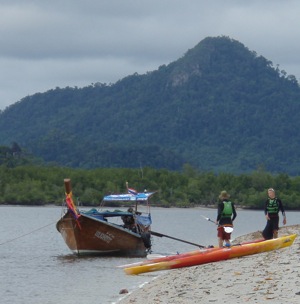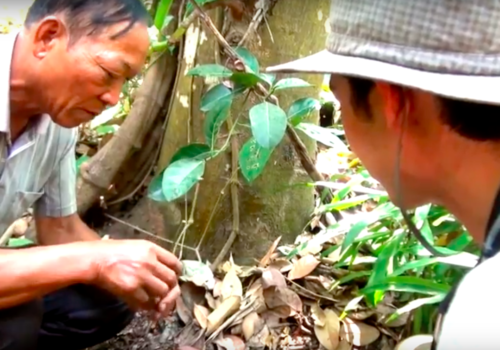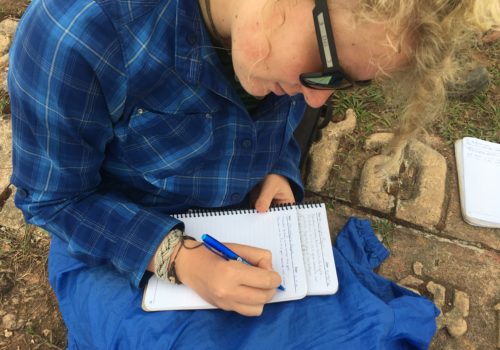
Sea kayaks and our support boat in Trang.
Good leadership is important, and helping students develop leadership skills is a key part of what we do at ISDSI.We worked with NOLS to tailor their leadership curriculum for our programs in Thailand, and have found their approach to leadership development to be excellent (see NOLS, Expedition Leadership for more). We worked with NOLS in the development of our Expedition Field Courses, and have found their approach to leadership to work well in a very different context than wilderness expeditions.
NOLS defines leadership as follows: Expedition leadership means timely, appropriate actions that guide and support your group to set and achieve realistic goals. Great leaders create an environment that inspires individuals and groups to achieve their full potential.
Leadership on an ISDSI course is different than what most students are used to in an expedition setting. Unlike leading in a wilderness setting, with an Expedition Field Course there are often more constraints. We can’t just camp anywhere, but have to get to a particular village by nightfall. We work with local guides, rather than just navigating by topographic map and compass/GPS. These constraints can make the leadership seem superficially more limited (not as many choices), but in reality, it makes it much more realistic and challenging.
In the real world, you are rarely in a situation where you have unlimited choices as a leader. Even in the wilderness, your choices are constrained by the fitness of the group, the terrain, weather, and sometimes the permitting system for wildlands management. On ISDSI courses we add to that constraints based on logistics (we have to get to a particular village on a particular day), as well as cultural and social components (working with local experts and village teachers).We also have the constraint that we have certain academic objectives for the course (studying a particular watershed, local community, or farming technique).
Each day students are “leader of the day” and join the instructor team is setting goals for the group, and creating the environment where the group can achieve its potential. We have found that when students focus only on the limitations imposed by the constraints (what they “can’t do”) they often struggle with leadership — thinking isn’t “real” if they can’t really fundamentally change the course and decide to do something completely different than what the course objectives are. Of course, even on a NOLS course there are constraints, and in the real world, you face those constraints all the time.
When students embrace the constraints, however, it is magic. Rather than seeing working with local guides on a hike through a forest as a limit it becomes an opportunity — the guides become companions and resource people. Embracing the constraints of leadership in the real world helps students realize that their “timely, appropriate actions” really do matter in how the group they are leading is able to function and thrive. Some days have fewer constraints (when to leave the beach while sea kayaking) some have more (a meeting with villagers after a hike studying ethnobotany with village elders, or a travel day). The best student leaders bring out the best in their groups, and can take an otherwise boring day of transport out to the expedition start into an exciting day to study the local countryside and team building. That is leadership that “inspires individuals and groups to achieve their full potential!”



